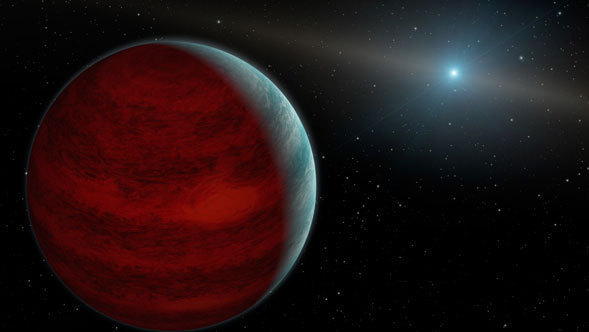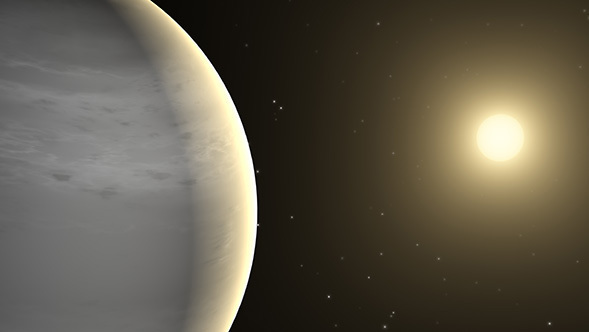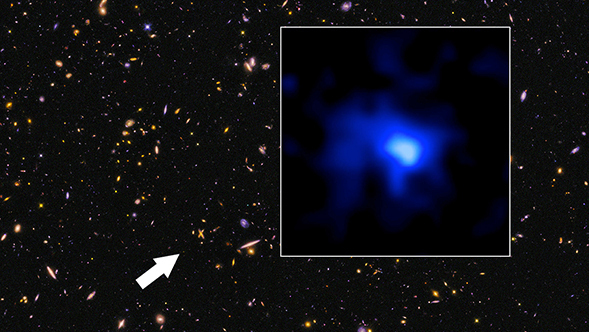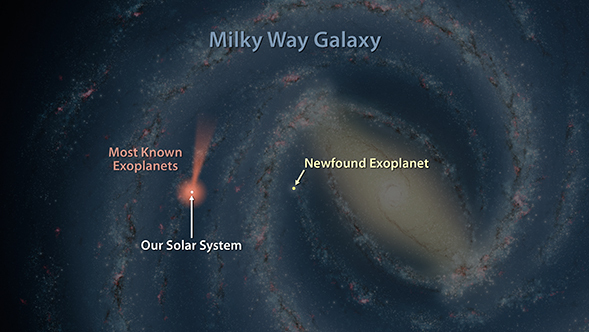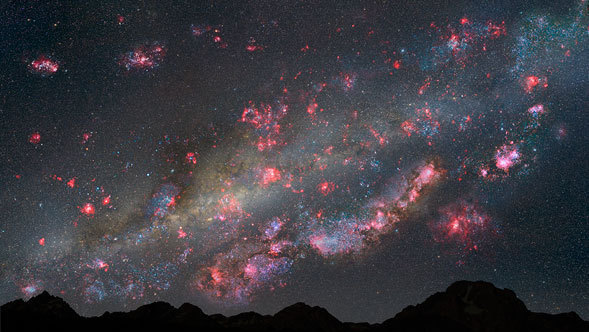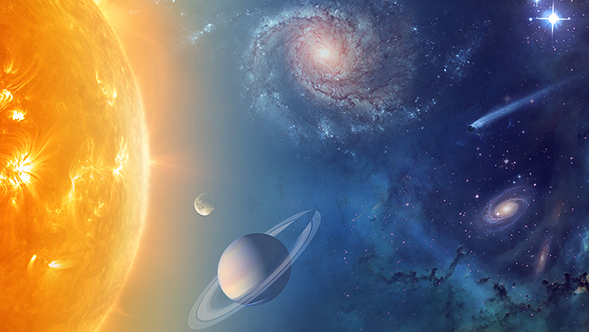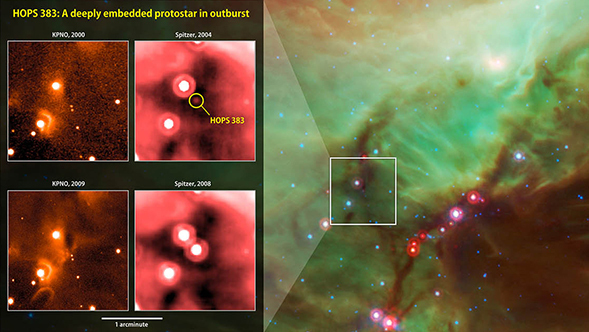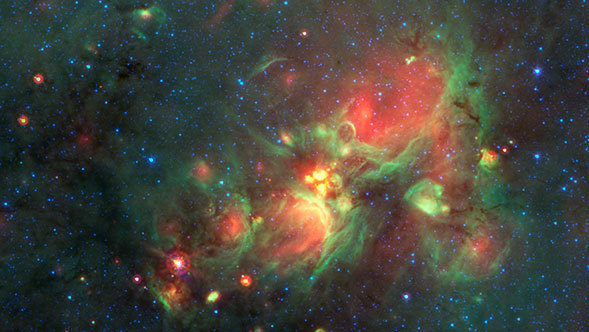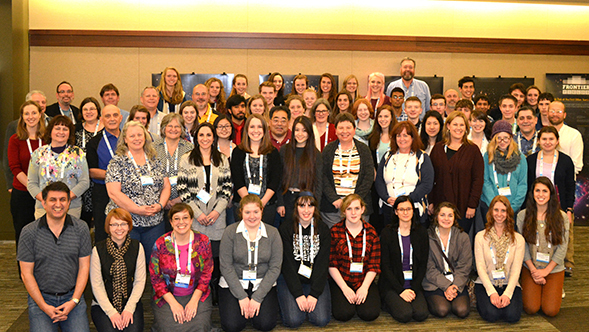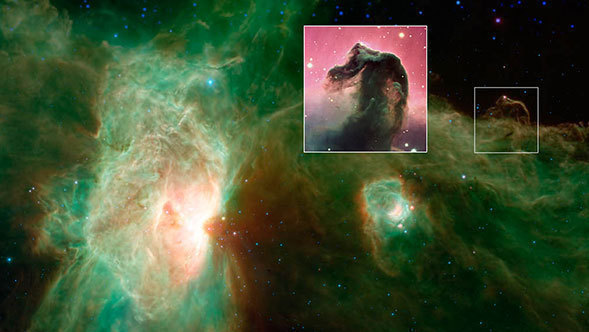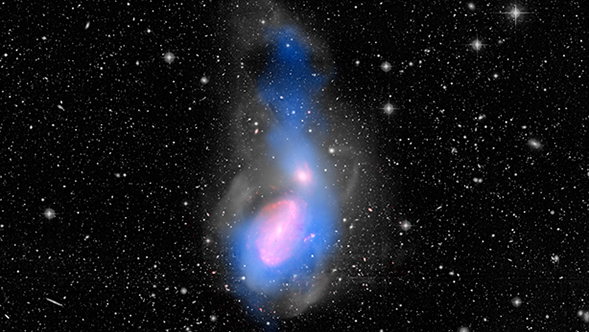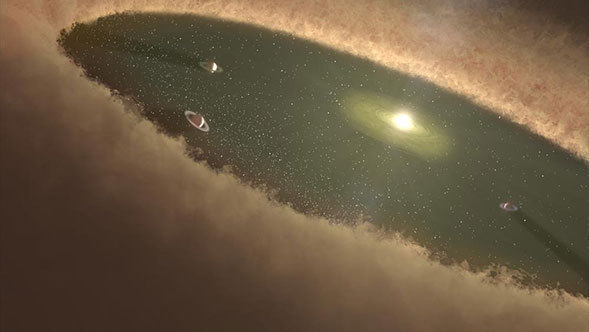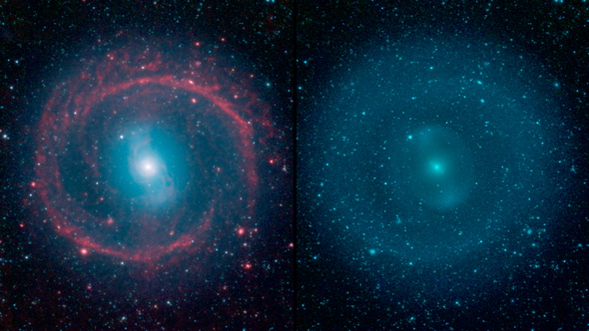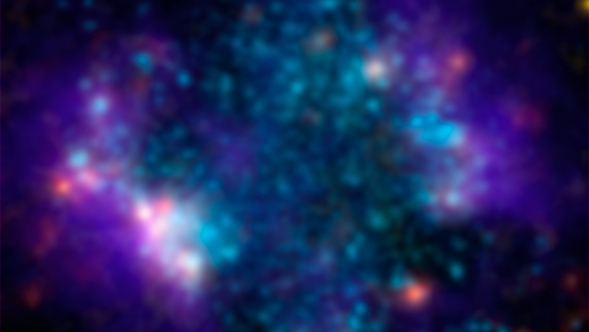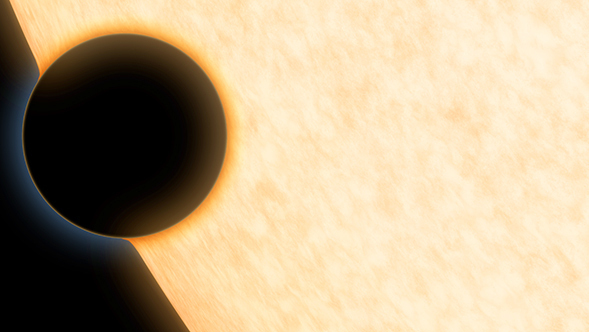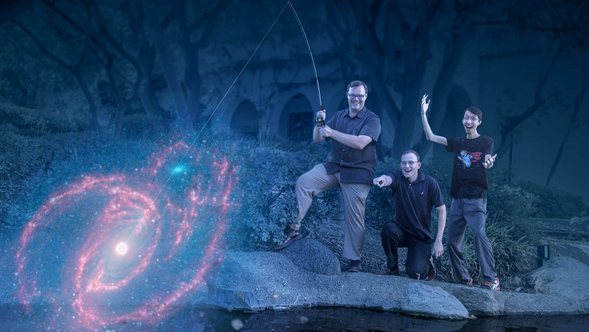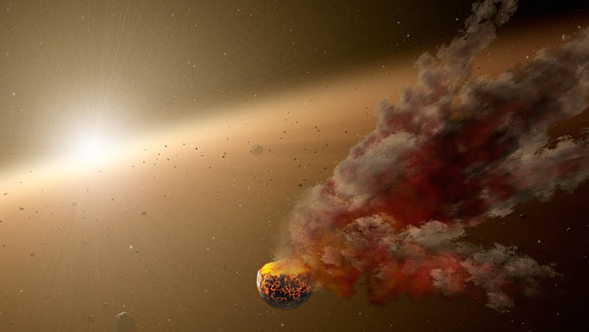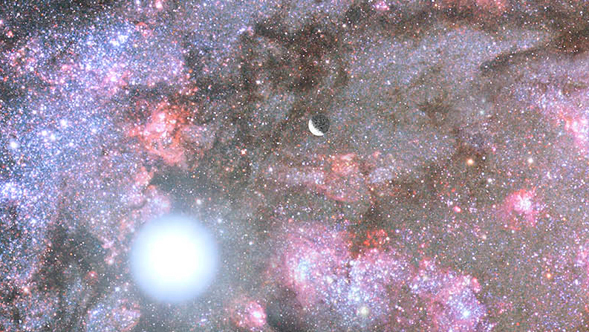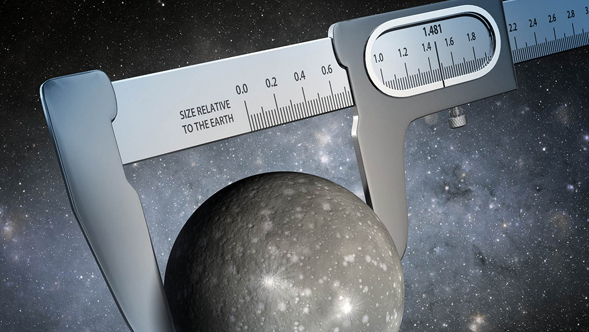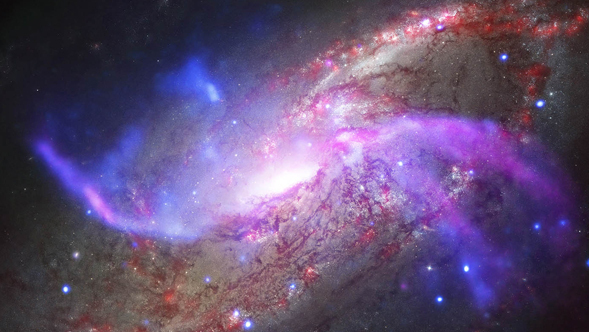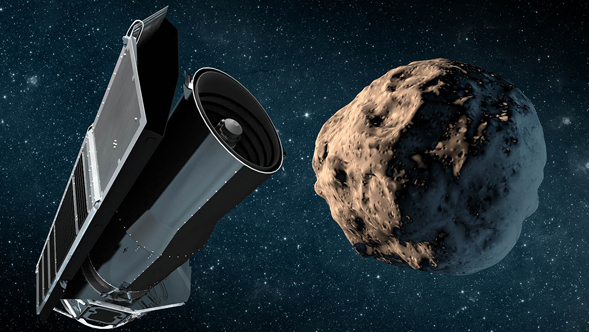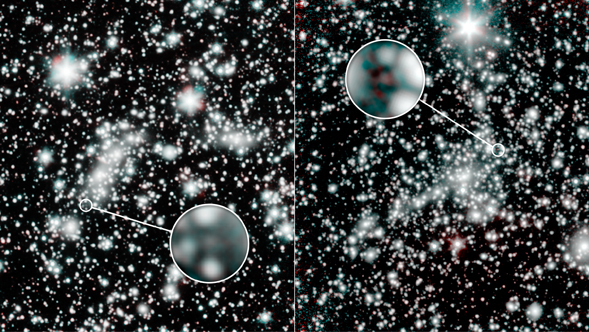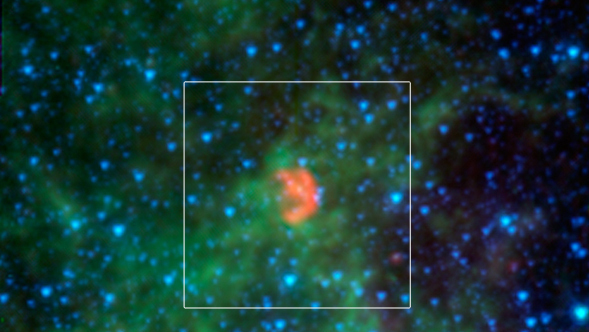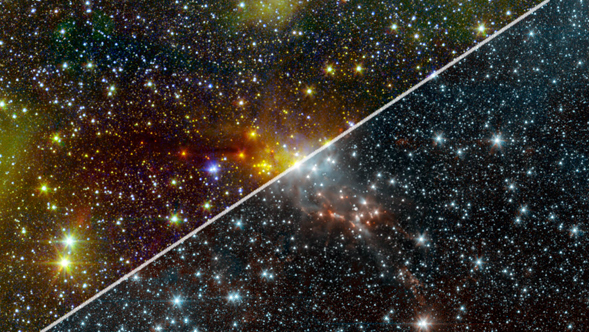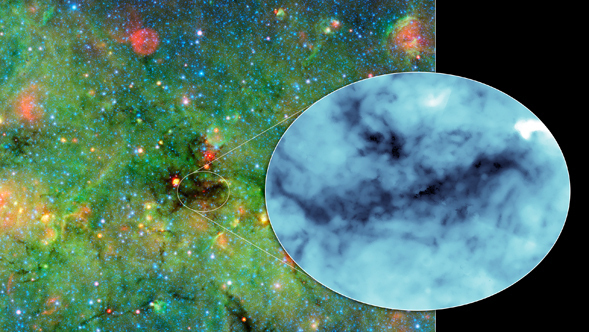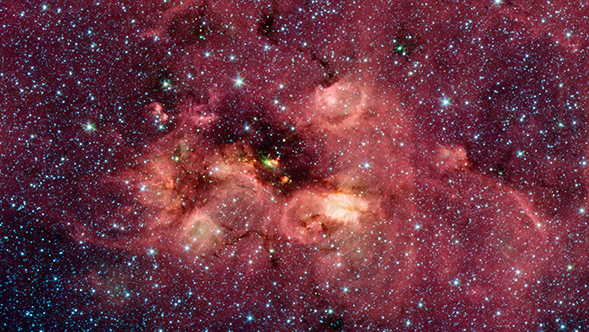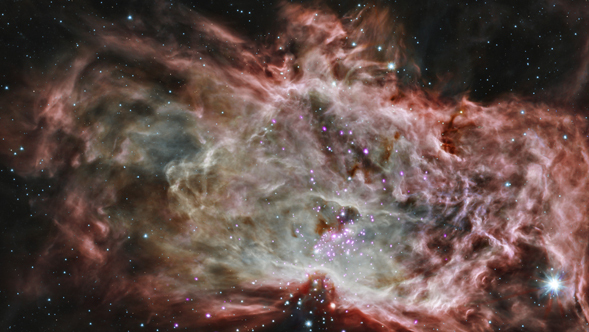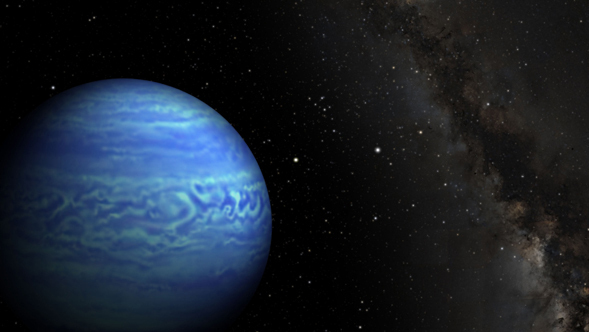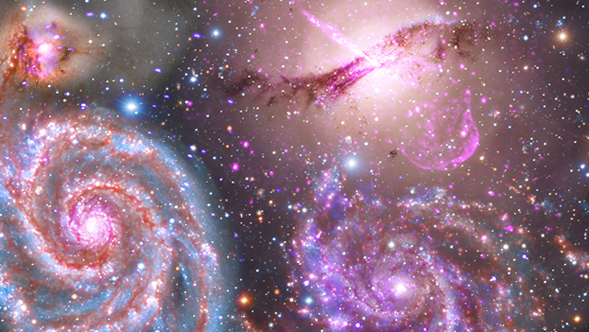Displaying news 121 - 150 of 516 in total
An older planet may have reclaimed its youthful glow, according to new evidence from NASA's Spitzer Space Telescope.
The wacky world of exoplanets continues to surprise astronomers. They wouldn't float like balloons or give you the chance to talk in high, squeaky voices, but planets with helium skies may constitute an exotic planetary class in our Milky Way galaxy.
An international team of astronomers, led by Yale University and the University of California scientists, pushed back the cosmic frontier of galaxy exploration to a time when the universe was only 5 percent of its present age of 13.8 billion years. The team discovered an exceptionally luminous galaxy more than 13 billion years in the past and determined its exact distance from Earth using the combined data from NASA’s Hubble and Spitzer space telescopes, and the Keck I 10-meter telescope at the W. M. Keck Observatory in Hawaii. These observations confirmed it to be the most distant galaxy currently measured, setting a new record. The galaxy existed so long ago, it appears to be only about 100 million years old.
NASA's Spitzer Space Telescope has teamed up with a telescope on the ground to find a remote gas planet about 13,000 light-years away, making it one of the most distant planets known.
Our Sun missed the stellar "baby boom" that erupted in our young Milky Way galaxy 10 billion years ago. During that time the Milky Way was churning out stars 30 times faster than it does today. Our galaxy was ablaze with a firestorm of star birth as its rich reservoir of hydrogen gas compressed under gravity, creating myriad stars. But our Sun was not one of them. It was a late "boomer," arising 5 billion years later, when star birth had plunged to a trickle.
As NASA missions explore our solar system and search for new worlds, they are finding water in surprising places. Water is but one piece of our search for habitable planets and life beyond Earth, yet it links many seemingly unrelated worlds in surprising ways.
A sudden eruption around an exceptionally young star surprises astronomers. Using data from orbiting observatories, including NASA's Spitzer Space Telescope, and from ground-based facilities, an international team of astronomers has discovered an outburst from a star thought to be in the earliest phase of its development.
"Hmm, what's that?" Simply by asking the question, volunteers have led researchers to illuminate a little-known stage of massive star formation.
How many high school teachers and kids can say that they have presented their astronomy reach alongside professional astronomers at an international conference? These folks can.
Sometimes a horse of a different color hardly seems to be a horse at all, as, for example, in this newly released image from NASA's Spitzer Space Telescope. The famous Horsehead nebula makes a ghostly appearance on the far right side of the image, but is almost unrecognizable in this infrared view.
One galaxy devoured remnants of another galaxy, quenching the formation of new stars.
Researchers studying what appears to be a beefed-up version of our solar system have discovered that it is encased in a halo of fine dust. The findings are based on infrared data from NASA's Spitzer Space Telescope and the European Space Agency's Herschel Space Observatory, in which NASA is a partner.
It might look like a spoked wheel or even a "Chakram" weapon wielded by warriors like "Xena," from the fictional TV show, but this ringed galaxy is actually a vast place of stellar life. A newly released image from NASA's Spitzer Space Telescope shows the galaxy NGC 1291.
What makes one rose bush blossom with flowers, while another remains barren? Astronomers ask a similar question of galaxies, wondering how some flourish with star formation and others barely bloom.
Astronomers using data from three of NASA's space telescopes -- Hubble, Spitzer and Kepler -- have discovered clear skies and steamy water vapor on a gaseous planet outside our solar system.
Astronomers "fishing" for galaxies turn up surprisingly massive catch. In one of the longest surveys the telescope will have ever performed, astronomers have begun a three-month expedition trawling for faint galaxies billions of light-years away.
NASA's Spitzer Space Telescope has spotted an eruption of dust around a young star, possibly the result of a smashup between large asteroids. This type of collision can eventually lead to the formation of planets.
Astronomers have for the first time caught a glimpse of the earliest stages of massive galaxy construction. The building site, dubbed "Sparky," is a dense galactic core blazing with the light of millions of newborn stars that are forming at a ferocious rate.
NASA's Spitzer Space Telescope has received the 2014 AIAA Space Science Award for its ongoing infrared studies of the hidden cosmos. The American Institute of Aeronautics and Astronautics, or AIAA, a society for the field of aerospace engineering, established the award in 1961 for "individuals demonstrating leadership of innovative scientific investigation associated with space science missions."
NASA's Kepler and Spitzer space telescopes have made the most precise measurement yet of the size of a planet beyond our solar system.
Celebrants this Fourth of July will enjoy the dazzling lights and booming shock waves from the explosions of fireworks. A similarly styled event is taking place in the galaxy Messier 106, as seen by NASA's Spitzer Space Telescope, Chandra X-ray Observatory and the Herschel Space Observatory.
Astronomers using NASA's Spitzer Space Telescope have measured the size of an asteroid candidate for NASA's Asteroid Redirect Mission (ARM), a proposed spacecraft concept to capture either a small asteroid, or a boulder from an asteroid. The near-Earth asteroid, called 2011 MD, was found to be roughly 20 feet (6 meters) in size, and its structure appears to contain a lot of empty space, perhaps resembling a pile of rubble. Spitzer's infrared vision was key to sizing up the asteroid.
Through a project dubbed SURFS UP, NASA's Spitzer Space Telescope and Hubble Space Telescope are catching sight of a "wave" of galaxies that emerged in the early universe. Starlight from these primordial galaxies is reckoned to have cleared a fog of hydrogen gas that shrouded the cosmos during a mysterious period known as the Dark Ages.
There were no witnesses to a stellar blast that lit up our skies a millennium ago, but NASA's Spitzer Space Telescope is finding clues in the charred remains.
The dark patch of clouds in this image from NASA's Spitzer Space Telescope is swaddled in so much dust, even infrared light is blocked.
A colossal, deeply dark cloud is found cranking out massive stars in a new Spitzer study.
Sometimes looking at the night sky can say more about the observer than the universe - at least that's how it feels when we're looking at clouds of dust and gas that remind us of a Rorschach inkblot test.
Using data from NASA's Chandra X-ray Observatory and infrared telescopes, astronomers have made an important advance in the understanding of how clusters of stars come into being.
NASA's Wide-field Infrared Survey Explorer (WISE) and Spitzer Space Telescope have discovered what appears to be the coldest "brown dwarf" known -- a dim, star-like body that surprisingly is as frosty as Earth's North Pole.
Long before the term "citizen science" was coined, the field of astronomy has benefited from countless men and women who study the sky in their own time.
Displaying news 121 - 150 of 516 in total
